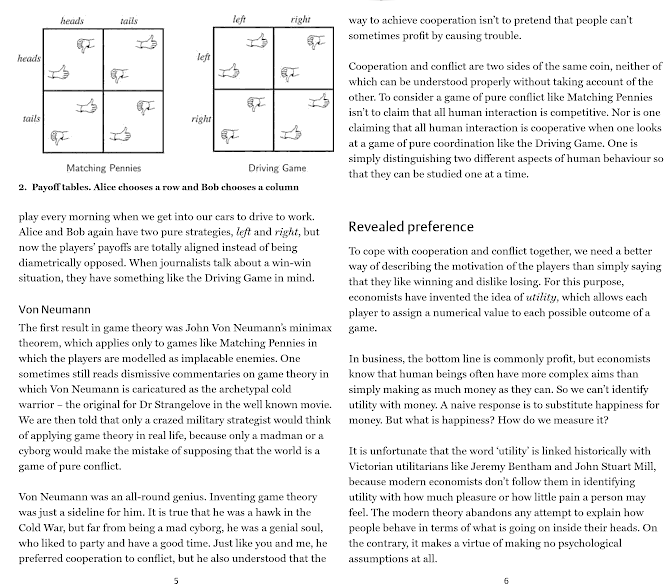

Further you can also file TDS returns, generate Form-16, use our Tax Calculator software, claim HRA, check refund status and generate rent receipts for Income Tax Filing. Intangibles are amortized over time to tie the cost of the asset to the revenues it generates, in accordance with the matching principle of generally accepted accounting principles . Assets that have been amortized usually don’t have an inherent resale value, while assets that have been depreciated often do. When calculating depreciation, this amount, called the salvage value, is taken into account by subtracting from the total cost of the asset before dividing by the useful life. Dividing the intangible asset’s price by its useful life leaves you with the regular amortization. For example, if you spent $45,000 on a patent and expect it to last for 15 years, its annual amortization would be $3000.
- Generally speaking, there is accounting guidance via GAAP on how to treat different types of assets.
- The interest charge is determined for monthly instalments by multiplying the interest rate by the outstanding loan balance and dividing it by twelve.
- Amortization is a fundamental concept of accounting; learn more with our Free Accounting Fundamentals Course.
- Our experts suggest the best funds and you can get high returns by investing directly or through SIP.
- Is determined by dividing the asset’s initial cost by its useful life, or the amount of time it is reasonable to consider the asset useful before needing to be replaced.
The amortized cost for fixed assets is the accumulated portion of the recorded cost of the fixed asset that has been charged to the expense account as depreciation or amortization. The interest charge is determined for monthly instalments by multiplying the interest rate by the outstanding loan balance and dividing it by twelve. The amount of principal due in a given month is the total monthly payment minus the month’s interest payments. The formulas for depreciation and amortization are different because of the use of salvage value. The depreciable base of a tangible asset is reduced by the salvage value.
Amortization is a broader term that is used for business intangibles as well as loans. For intangibles, the amortization schedule divides the value of the intangible assets over the asset’s useful life. However, it works similarly in the case of loans, but the payment structure is different. Secondly, amortisation may also refer to the outspread of capital expenses related to intangible assets over a fixed period, usually over an asset’s useful life, for accounting and tax-related purposes.
Section 179 deductions allow you to recover all of the cost of an item in the first year you buy and start using it. This deduction is available for personal property and qualified real property and some improvements to business real property. There are limits on the amount of deduction you can take for each item and an overall total limit. You can only use this deduction for property that is used more than 50% for business purposes, and only the business part of its use can be deducted. Amortization for intangibles is valued in only one way, using a process that deducts the same amount for each year. The amortization calculation is original cost is divided by the number of years, with no value at the end.
Learn How NetSuite Can Streamline Your Business
Any loan for which you make the same loan payments every month until your term ends is amortized. SBA loans are thus classic examples of amortized loans, as their structure requires equal payments every month . However, you can also prepare your loan amortization schedule by hand or in MS excel. Let’s look at the formula periodic payments in the loan amortization. Here we provide examples of amortization in everyday life to make it easier to understand. Suppose Company S borrows funds of $10,000, with the installments, Company S must pay $1200 annually.
Balloon loans initially require equal monthly payments before pivoting to one large final payment, and this structure disqualifies these loans from counting as amortized. The term amortization can also refer to the completion of that process, as in “the amortization of the tower was expected in 1734”. However, it is also important to note that loan amortization is common in personal finance. Incorporate finance; the amortization principle is generally applicable to intangible assets. Most businesses file IRS Form 4562 Depreciation and Amortization to do the calculations for depreciation and amortization for the year.
Put another way, amortization shows how a sales-generating asset’s value declines the more sales it generates, and depreciation shows how the items underlying your production process lose value. The loan schedule consists of a down payment and periodic payments of interest+principal. Since amortization doesn’t deal meaning of amortization with physical assets, the process is no different for a home business than any other business that owns intangible property. The scheduled payment is the payment the borrower is obliged to make under the note. The loan balance declines by the amount of the amortization, plus the amount of any extra payment.
The amortization base of an intangible asset is not reduced by the salvage value. This is often because intangible assets do not have a salvage, while physical goods (i.e. old cars can be sold for scrap, outdated buildings can still be occupied) may have residual value. Unlike intangible assets, tangible assets might have some value when the business no longer has a use for them. For this reason, depreciation is calculated by subtracting the asset’s salvage valueor resale value from its original cost. The difference is depreciated evenly over the years of the expected life of the asset. In a loan amortization schedule, this information can be helpful in numerous ways.

A loan is amortized by determining the monthly payment due over the term of the loan. For example, a company benefits from the use of a long-term asset over a number of years. Thus, it writes off the expense incrementally over the useful life of that asset. Likewise, your amortization is expensed as a negative value under your intangible assets on your balance sheet. Often, balance sheets do not distinguish intangible assets from one another, so instead of listing out your intangibles one by one, group them, then record your amortization. The vast majority of, but not all, small business loans are amortized.
Tangible assets are recovered over what the IRS calls their “useful life,” which is determined based on the asset type. See IRS Publication 946 How to Depreciate Property for more details on asset classification or ask your tax professional. DisclaimerAll content on this website, including dictionary, thesaurus, literature, geography, and other reference data is for informational purposes only.
In some balance sheets, it may be aggregated with the accumulated depreciation line item, so only the net balance is reported. Another difference is the accounting treatment in which different assets are reduced on the balance sheet. Amortizing an intangible asset is performed by directly crediting that specific asset account. Alternatively, depreciation is recorded by crediting an account called accumulated depreciation, a contra asset account. The historical cost fixed assets remains on a company’s books; however, the company also reports this contra asset amount to report a net reduced book value amount. Amortization is the way loan payments are applied to certain types of loans.
Intangible assets that are outside this IRS category are amortized over differing useful lives, depending on their nature. For example, computer software that’s readily available for purchase by the general public is not considered a Section 197 intangible, and the IRS suggests amortizing it over a useful life of 36 months. Say a company purchases an intangible asset, such as a patent for a new type of solar panel.
A fixed asset is a long-term tangible asset that a firm owns and uses to produce income and is not expected to be used or sold within a year. Depletion is another way that the cost of business assets can be established in certain cases. In other words, the depreciated amount expensed in each year is a tax deduction for the company until the useful life of the asset has expired. That means that the same amount is expensed in each period over the asset’s useful life. Assets that are expensed using the amortization method typically don’t have any resale or salvage value.
But if the rate rose to 7% after five years, the fully amortizing payment would jump to $657.69. For securities, amortized cost refers to the positive or negative adjustments for purchase discounts or premiums related to the purchase of securities. The term amortization is used in both accounting and in lending with completely different definitions and uses. The two accounting approaches also differ in how salvage value is used, whether accelerated expensing is done, or how each are shown on the financial statements. Learn accounting fundamentals and how to read financial statements with CFI’s free online accounting classes.
Looking for software system to improve your business efficiency?
To learn about the types of amortization, we shall consider the two cases where amortization is very commonly applied. Continuing with this calculation, your principal will be zero by the end of the loan term. Next is to subtract the interest from the monthly installment amount; the remaining amount goes as the principal. Learn how personal loan interest rates work, how rate types differ, and what the average interest rate is on a typical personal loan. Amy Fontinelle has more than 15 years of experience covering personal finance, corporate finance and investing.
When a loan is granted, a series of fixed payments is built at the outset, and the individual who takes the loan is responsible for meeting each of the payments. An amortization schedule is a complete schedule of periodic blended loan payments showing the amount of principal and the amount of interest. The total payment stays the same each month, while the portion going to principal increases and the portion going to interest decreases. In the final month, only $1.66 is paid in interest, because the outstanding loan balance at that point is very minimal compared with the starting loan balance.
Concerning a loan, amortization focuses on spreading out loan payments over time. In the context of lending, an “amortizing” loan is one that is spread throughout its term with regular fixed payments. The balance goes down with every installment until it is completely paid off, or amortized. SBA loans through SmartBiz® bank partners are fully amortizing, which means that your monthly payments will go toward paying down the balance until it’s reduced to zero.
How does depreciation and amortization work for a home business?
The amortization period is the end-to-end period for paying off a loan. Here we shall look at the types of amortization from the homebuyer’s perspective. If you are an individual looking for various amortization techniques to help you on your way to repay the loan, these points shall help you. Consequently, the company reports an amortization for the software with $3,333 as an amortization expense.
Legal Definition
Having a great accountant or loan officer with a solid understanding of the specific needs of the company or individual he or she works for makes the process of amortization a simple one. Amortization applies to intangible assets with an identifiable useful life—the denominator in the amortization formula. The useful life, for book amortization purposes, is the asset’s economic life or its contractual/legal life , whichever is shorter. In business, accountants define amortization as a process that systematically reduces the value of an intangible asset over its useful life. It’s an example of the matching principle, one of the basic tenets of Generally Accepted Accounting Principles . The matching principle requires expenses to be recognized in the same period as the revenue they help generate, instead of when they are paid.
In accounting, assets are resources with economic value owned by individuals, companies, or countries with the hope that they will provide benefits in the future. However, the value of the purchased asset is not the same as when it was first purchased. Next one, you can use a financial management system to optimize the company’s financial management and meet client needs to the maximum. The two basic forms of depletion allowance are percentage depletion and cost depletion. The percentage depletion method allows a business to assign a fixed percentage of depletion to the gross income received from extracting natural resources. The cost depletion method takes into account the basis of the property, the total recoverable reserves, and the number of units sold.
Companies use depreciation to amortize fixed assets over their usable life. Amortization expense is the write-off of an intangible asset over its expected period of use, which reflects the consumption of the asset. This write-off results in the residual asset balance declining over time. Personal loans were taken from online lenders, credit unions, and other financial institutions like banks fall in the category of personal loans and are usually amortized. However, most typically, such loans are spread over three to five years.
